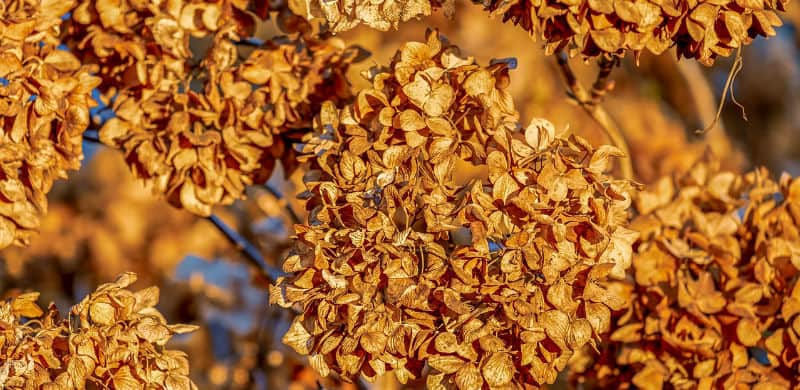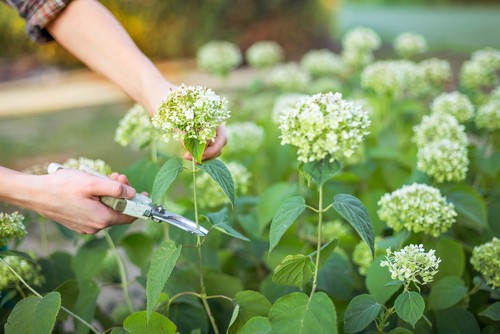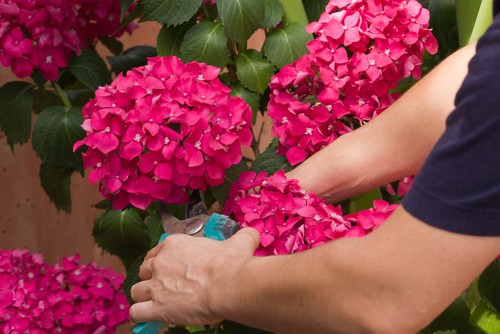
How to deadhead hydrangeas
Our site is reader supported, this means we may earn a small commission from Amazon and other affiliates when you buy through links on our site.
Deadheading your hydrangeas is a process where you snip off any of the wilting hydrangea blossoms after they have bloomed or gone to seed. This is a good process to do regularly because it not only keeps your hydrangea looking beautiful but it helps to redirect any energy in the plant toward new plant growth rather than old, dying growth.
No matter what type of hydrangea you have, when you see the blossoms begin to wilt and turn brown you can start to deadhead. This process requires pruning secateurs or very sharp scissors.

It is recommended that you keep a hand rag soaked in denatured alcohol with you as you go about this process so that you can clean your tools as you go along that way you don’t contaminate any of the new growth areas as you go from hydrangea to hydrangea.
When you set about cutting off the heads of your flowers you want to lift them up as well as the nearby leaves and examine underneath. The reason for this is that with many hydrangeas the new growth will start to grow on the same stems and as you get further into the growing season the new growth will get closer to those old blooms. Gently snip off the blossom right above the top leaves on the stem so that your hydrangea has the opportunity to replace the same area with a new flower the coming season, or if you’re lucky the present season, see endless summer hydrangeas.
You can deadhead your hydrangea at almost any time of year. Whenever the flower starts to wilt you can clip it off so long as you only remove the blossom. You might not want to remove any dead or wilting blossoms at the start of winter because they can be advantageous as they protect new buds against frost and wind damage while they are still developing.

It is important to differentiate between deadheading and pruning. Deadheading only refers to the process of removing the wilted blossoms but anything beyond that is referred to as pruning and if you are going to prune your hydrangea you have to be much more careful about when you do it. Hydrangeas will be much healthier if you remove the old blossoms and if you remove any dead branches. So you can choose to prune back the dead branches depending on the type you have.
Some hydrangeas produce new growth on the healthiest newest would while others produce new growth on the wood from the season prior. Figure out which type you have before you start cutting off branches so that you don’t accidentally cut off branches with new growth on them. If you plan to prune you can always do it at the same time as deadheading just to make sure it’s completed simultaneously.
Images credit – Shutterstock.com